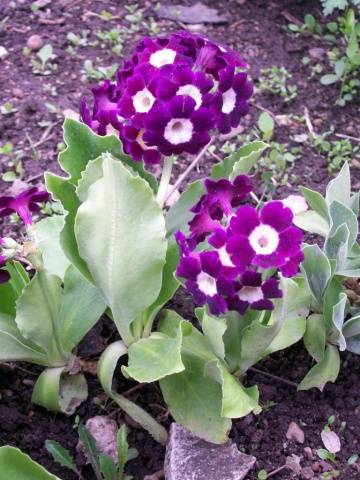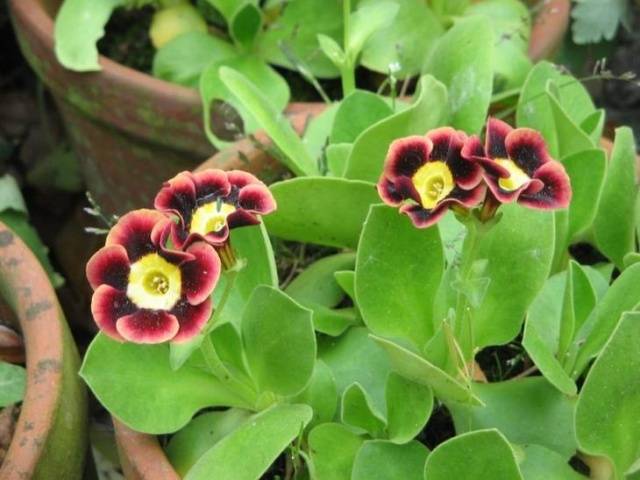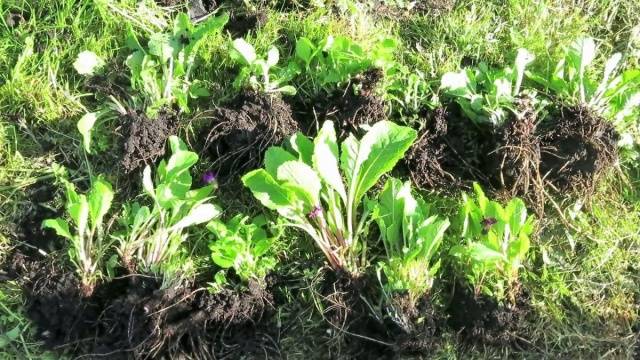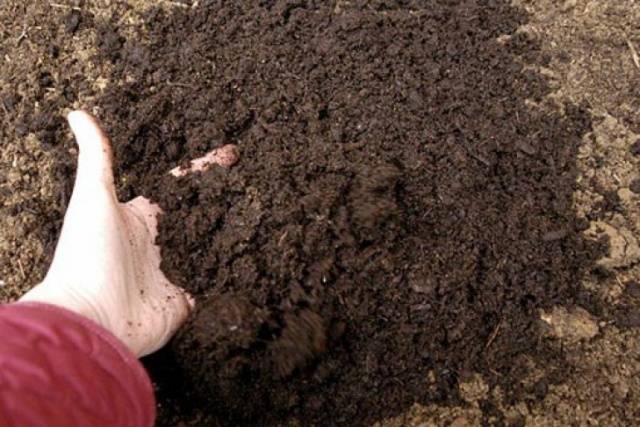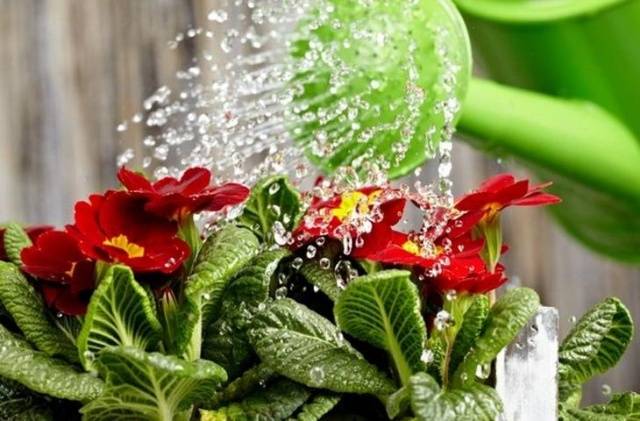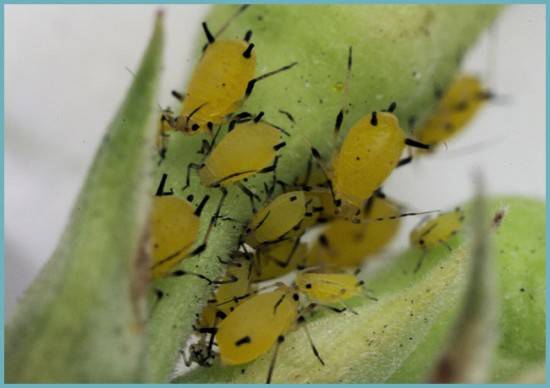Content
In early spring, when the buds are just beginning to swell on the trees, the first green leaves of primrose emerge from the ground. They are one of the first to bloom, for which they received another name among the people - primrose. In addition, these delicate spring flowers have several other names: rams, flower of the twelve Gods. And they are called keys because they open the summer season of bright and elegant flower beds, decorated with flowers of various shades. And flower growers love them not only for their unpretentiousness and inimitable beauty, but also because planting perennial primroses and caring for them is not particularly difficult.
Brief characteristics of the plant
Primrose belongs to the genus of plants of the family. Primroses, which are represented mainly by low, beautifully flowering herbs.Primroses are mostly perennial flowers; biennials and annuals are extremely rare.
In the wild, primrose grows in Central Asia, North Africa, the Middle East and Europe.
Perennial primrose (pictured below), planting and caring for which is not too burdensome, has quite powerful roots. Juicy, emerald-colored leaves are collected in leaf rosettes located very close to the root system. Wrinkled, whole leaves, depending on the variety, have a simple or slightly elongated shape. In some varieties, the foliage appears to be covered with a gray-green waxy coating.
The bright, colorful flowers of the garden perennial primrose are located on numerous long peduncles. From 3 to 10 inflorescences can bloom simultaneously on one peduncle. The number of peduncles in one rosette is up to 20.
Five-petaled flowers of regular shape are represented in a very rich color palette. Plain, bordered with a contrasting border, two-, three- and even four-color, single or collected in inflorescences in the form of brushes or umbrellas - the variety of varieties and types of perennial primrose can amaze even avid gardeners.
Usually the height of the peduncles is not much higher than the height of the primrose bushes. However, there are varieties whose peduncles reach 30-40 cm in height. A small bush covered with flowers looks luxurious and impressive in a flowerbed, impressing with its riot of colors and abundance of flowering.
After abundant flowering, fruits are formed on the peduncles - seed pods of cylindrical or spherical shape. Perennial primrose is unpretentious and quickly adapts to any conditions.These delightful flowers are grown not only in gardens and plots, but also at home.
What types and varieties exist
More than 400 species, not counting hybrids and varieties that appeared relatively recently - a fairly wide range.
In the article you will learn not only the secrets of planting and caring for flowers, but you will also be able to see in the photo some of the most beautiful varieties of perennial primrose.
Auricular primrose
This species includes evergreen herbaceous perennials with leathery, thick leaves of bright green color. The flowers reach 2 cm in diameter. Flower growers appreciate hybrid plant varieties presented in a rich range of colors. This group includes several truly unique varieties of flowers, the buds of which are painted in several very bright and contrasting colors.
Primula pubescent
Another type of flower worthy of attention is the perennial pubescent primrose and photos of several specimens. All varieties belonging to this species are hybrids bred by crossing auricular and stiff-haired primroses. A compact perennial, no more than 15 cm in height, characterized by high frost resistance. The flowers are located on powerful, erect pedicels up to 15 cm in height. Inflorescences consist of 5-15 flowers.
Abundant flowering continues from May to the end of June.
Primrose fine-toothed
Bushy perennial. The inflorescences of this species are large, spherical, and consist of a large number of burgundy, snow-white, lilac or purple small flowers, the diameter of which is from 0.5 to 2.5 cm.The inflorescence can reach 10 cm in diameter. The height of the peduncles ranges from 20-25 cm.
The fine-toothed perennial primrose blooms wildly and luxuriantly, as in the photo, from April to mid-late June. The leaves of the flowers are covered with a peculiar coating, and it is strongly not recommended to moisten them.
Primula florinda
This type of flower includes perennial plants, characterized by abundant and long-lasting flowering and inimitable bell-shaped buds. It is preferable to plant and care for perennial garden primroses (see photo), belonging to the Florinda species, near small bodies of water.
A feature of proper care is regular thinning of the flower garden. To do this, 3-4 basal rosettes are left on one bush, and the rest are cut off. In this case, the plant will thank you with riotous flowering from the beginning of June to the end of August. Perennial primroses belonging to the Florinda species require mandatory shelter for the winter.
What methods of reproduction exist?
Growing perennial garden primrose is a fun and exciting process. First of all, this is a huge field of activity for those who like to experiment, grow new varieties, and create unique flower compositions in landscape design. And garden primrose can fully satisfy all the desires of the most sophisticated gardeners.
Primrose can be propagated in several ways:
- seeds;
- dividing the bush (or rosettes);
- leaf plates.
And in order to grow these inimitable flowers, you need to know not only the rules for planting and caring for perennial primrose in the open ground, but also a few secrets that will help you achieve a positive result.
How to grow flowers from seeds
The peculiarity of growing garden perennial primrose from seeds is that during the first year you will have to grow flowers at home. The plant is transplanted into open ground only in the second or third year after planting.
At first glance, it may seem that this is a very labor-intensive and troublesome process. In fact, planting seeds and caring for perennial primrose will not take much of your time and effort, and the reward for your care will be bright and inimitable flowers that decorate your garden in early spring with amazing and rich colors.
Before growing perennial primrose, the seeds must be stratified. This can be done in several ways:
- put dry flower seeds in the freezer for several days for 2-3 days, and then sow;
- if sowing is carried out in February-March, you can leave dry seeds for several days on the veranda/balcony;
- After sowing, do not water the flowers, but place several handfuls of snow on the ground and level it over the surface. The snow layer should be at least 5-7 cm.
In general, planting seeds of perennial primrose is not much different from sowing other garden flowers:
- primrose seeds are placed in containers prepared in advance with a drainage layer laid and 2/3 filled with soil mixture, maintaining a minimum distance of 3-4 cm;
- the surface layer of soil should not exceed 5-7 mm;
- garden primrose seeds take a long time to germinate - about 3-4 weeks, so be patient;
- The signal for picking is the appearance of 2-3 full leaves.
After picking a perennial primrose planted with seeds, provide the flowers with proper care. It is better to distribute flowers in separate flower pots. A suitable place for them should be a window sill that is not too bright.
Make sure that the soil in containers with flower seedlings does not dry out. Primrose grown from seeds should be fertilized according to the recommended scheme. The first flowers, indicating the arrival of the long-awaited spring, will appear no earlier than in a year or two. The timing of flowering directly depends on the variety and growing conditions.
How to properly divide a bush
Dividing the bush is the most popular method of propagating garden primrose. This method has a lot of advantages:
- the fastest possible result;
- preservation of species and varietal characteristics in full;
- simplicity and ease of implementation.
Considering that after planting with good care, perennial primrose grows quite quickly, the bushes must be divided and replanted at least once every 4-5 years.This procedure is vital for plants, since old roots can no longer fully absorb nutrients. Over time, the rosettes become smaller, flowering becomes scarce, and varietal characteristics disappear irrevocably.
Overgrown bushes of perennial primrose need to be watered well within a day. Use a fork to carefully dig up the plants, taking care to cause as little damage to the root system as possible. Shake off excess soil and gently rinse the rhizome.
You only need to divide the root system with a clean, sharply sharpened knife. Please note that each separated part must have at least 2 rosettes and a piece of healthy root.
The divisions are planted in accordance with the rules for planting garden perennial primrose and provide the flowers with proper care.
If you want to propagate the plant or share your luxurious flowers with someone, but it is still too early to plant primroses, you can carry out a more gentle division procedure.
In this case, you do not need to dig up the entire bush. Using a sharp enough knife, separate the young rosettes with a small piece of root from the edge. Immediately plant the separated parts in a new place. As with dividing a bush, garden primrose can be propagated using this method either in early spring, when it has not yet bloomed, or after flowering. The second option is more preferable.
Propagation by leaf blades
Some varieties of perennial primroses also reproduce using leaf blades. And this method, as with growing perennial primrose from seeds, will also require a lot of time and effort.But when did this stop avid flower growers who wanted to decorate their garden plots with new, chic varieties of flowers?
Propagation by leaf blades is a fairly well-known and affordable method that allows you to preserve all the varietal characteristics of the original plant. And he is very familiar to many flower growers. This is how homemade violets are propagated.
After flowering, the healthiest and strongest leaves with cuttings are separated from the bush. Please note that the foliage must be elastic. Limp, yellowed and diseased leaves are not suitable for propagation of perennial primrose.
Many gardeners advise stratifying soaked or already swollen seeds. This is completely wrong! It is useless to wait for seedlings with this method of stratification!
To speed up root formation, cut off the leaf blade by 2/3. That is, you should still have a petiole in your hands, on which 1/3 of the leaf is located. Treat the petiole with a stimulant to promote root formation and growth.
Seedlings prepared in this way are planted in flower pots filled with soil mixture for growing indoor flowers. The cuttings need to be buried at an angle and no more than 2 cm.
It takes a long time for the cuttings of perennial primrose to take root. You will be able to see the first signs of rooting no earlier than after 3-4 weeks. To speed up the process, you can cover the flower cuttings with glass jars. As soon as the first small leaves appear, the cover can be removed.
Rules for planting primroses
As you know, not only the appearance of the plant, but also the splendor of flowering, as well as the preservation of varietal characteristics over a long period, depend on how competently and scrupulously all the recommendations for planting and caring for perennial primrose are followed.
Choosing a suitable site
Most garden flowers prefer sunny, well-lit areas. It is very difficult to choose plants for shaded and low-light areas. Perennial garden primrose is an excellent option to fill empty areas.
When choosing a variety, you need to pay attention to color preferences. Some varieties love exclusively sunny places, for others the ideal solution would be shaded areas on the north side of buildings or under trees, while others are best planted near small bodies of water.
Please note that an incorrectly chosen location will immediately have a negative impact on the plant. Light-loving primroses planted in the shade will often get sick. Shade-loving flowers planted in a brightly lit area will not give that brightness and splendor during flowering.
Determining the optimal timing
When determining the optimal time for planting perennial primrose, not only the method of propagating flowers is important, but also the expected time of transplantation into open ground.
When propagating from seeds, you can sow flowers:
- In autumn. It is advisable to sow the seeds of perennial primrose immediately in open ground in October-December. This method of sowing seeds is deservedly considered the most effective, since the seed material undergoes a process of natural stratification.
- In early spring, perennial primrose seeds are planted in late February - early March.
- In summer, seeds can be sown after the seed pods have ripened. When planting and caring for perennial primrose in the summer, it is important to ensure that the soil is always moist.
It is preferable to plant perennial primrose in open ground in early spring, when the air temperature outside is at least +14˚С +16˚С. In most regions, the suitable period is late April - early May. Before planting, flowers kept at home must be hardened off for a week.
In autumn, plants can be replanted only a year after sowing. Mid-to-late October is the most suitable time for planting primrose in open ground.
Soil preparation
When growing garden perennial primrose in open ground or at home, it is important to know that the plant grows better and blooms profusely on light, loose and fertile soils.
Soil moisture is of no small importance. There should be no stagnant moisture in the areas for planting primrose. Areas with high groundwater levels are also unsuitable for growing flowers - the root system will rot and the plant will die.
Before planting perennial primrose on depleted soil, it must be fertilized in advance. 5-7 days before the intended planting of primrose, enrich the soil with the following mixture per 1 m²:
- compost – 10 kg;
- humus – 5 kg;
- peat – 5 kg;
- sand – 5 kg.
If desired, you can add complex mineral fertilizers to the soil. Carefully dig up and level the future flower bed.
Primroses can be planted in an area prepared in this way no earlier than a week later.
Planting secrets
In general, the process of planting perennial primrose is not much different from planting other garden flowers.However, there are several recommendations that it is advisable to follow so that the subsequent results are not disastrous:
- When growing garden primrose from seeds in open ground, flowers can be planted only 1-2 years after growing at home.
- The minimum distance between flowers depends on the variety and size of the plants. For compact primroses, maintain an interval of 15 cm, for large ones - at least 20 cm.
- When planning a flower bed, take into account an important feature of annual or perennial primroses - they do not like free space at all. Try to plant flowers so that during the growth process there are practically no empty areas between the bushes.
- It is best to replant or plant primroses in cool weather. The best time to plant is early morning or evening.
- When planting in autumn, flowers must be covered for the winter even before frost sets in. Weak, immature primroses do not have time to fully prepare for frost.
Immediately after completion of planting work, the flowers need to be watered abundantly and shaded for 3-4 days.
Aftercare
Despite the fact that primrose does not need close attention and constant care, it will be almost impossible to grow truly luxurious flowers that delight you with their bright colors in early spring without following the rules of agricultural cultivation. This amazing beauty is not too demanding in this regard.
How often to water primroses
Perennial and annual primrose is a very moisture-loving plant. The soil in the flower garden should always be moist. In spring, flowers need to be watered at least 1-2 times a week.But in summer, the frequency of watering, as well as the volume of water, needs to be doubled.
It is especially important to pay great attention to this care item after planting perennial primrose, as well as during flowering. After planting the plants in the spring, the plantings need to be watered every day for 1.5-2 weeks.
In rainy weather and excessive humidity, watering can be omitted.
Feeding scheme
Don't forget about fertilizers. Regular enrichment of the soil with minerals is an important component of proper care of garden primrose after planting, in the budding phase, and during flowering.
During the period of relative rest, primrose does not particularly need feeding. Flowers should be fertilized no more than 2-3 times during the entire growing season:
- In early spring, as soon as the snow melts and the first signs of the plant awakening from winter sleep appear, feed the primroses with a mineral complex.
- In June-July it is better to use organic matter.
- In the second half of August, you can add ammonium nitrate.
The winter hardiness of primrose is increased by fertilizing based on potassium and superphosphate. Therefore, ammonium nitrate can be replaced with phosphorus-containing fertilizers.
Preventive measures
Since primrose is a big lover of moisture, it is often affected by fungal diseases, including powdery mildew, rust, rot, and bacterial spots. At the slightest sign of the appearance of fungal diseases, you need to treat the plants with fungicides.
When bacterial diseases manifest themselves, more radical measures are taken. Affected flowers are removed and the soil is treated with special preparations.It is not advisable to plant perennial primrose in the same place for 4-5 years.
Insects also often choose primroses as a refuge. As soon as you notice the appearance of aphids, weevils, spider mites or flea beetles in your flower garden, take immediate action. Spray the flowers with insecticides.
The author of the video will share with you his secret of growing perennial primrose from seeds.
Conclusion
Thanks to its brightness and varied colors, perennial primrose will help to highlight the advantages of your garden plot and fill empty spaces with beautiful flowers. Any shaded corner of the garden will look rosy and attractive. By combining several different varieties, you can create chic and unique flower beds and flower arrangements that will bring aesthetic pleasure from spring until the end of summer.








